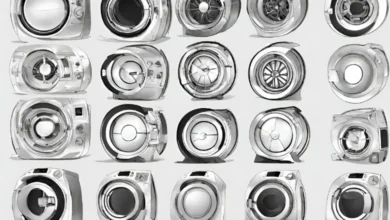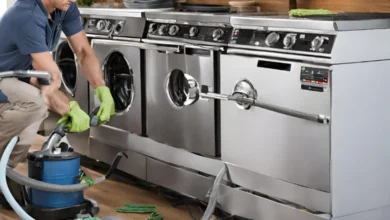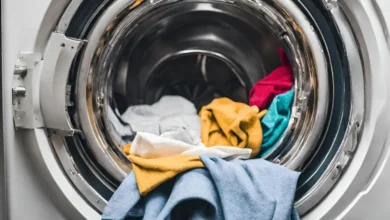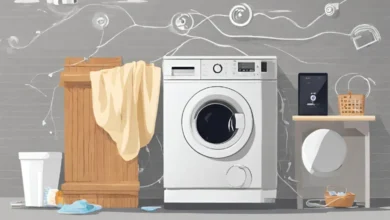Choosing Between Automatic and Semi-Automatic Washing Machines: A Comprehensive Guide

Washing machines have become indispensable appliances in modern households, revolutionizing the way we approach laundry. Among the myriad choices available, the decision often boils down to opting for either automatic or semi-automatic washing machines. In this in-depth exploration, we will dissect the features, advantages, disadvantages, and the various factors influencing the decision-making process when it comes to these essential household devices.
Automatic Washing Machines: Streamlined Convenience
Pros
In the realm of automatic washing machines, convenience takes center stage. These devices are tailored for those seeking a hassle-free laundry experience. The allure lies in their fully automated washing cycles, a feature that significantly reduces the need for user intervention. Once the laundry is loaded and the desired program selected, users can sit back as the machine efficiently tackles the rest, saving precious time and effort.
The versatility of automatic washing machines is another notable advantage. These appliances often boast a plethora of programmable settings, empowering users to tailor wash cycles according to fabric types, soil levels, and other specific requirements. This adaptability ensures that garments are treated with the utmost care, catering to diverse materials and laundry demands.
Efficiency is a hallmark of automatic washing machines, particularly when it comes to time. The automated cycles are generally swift, making them an ideal choice for individuals with hectic schedules or households with a constant stream of laundry needs. The time-saving aspect adds a layer of convenience that resonates with those valuing efficiency in their daily routines.
Cons
However, the convenience of automatic washing machines comes at a cost, both figuratively and literally. One significant drawback is the higher initial investment required. The advanced automation and cutting-edge technology embedded in these machines contribute to a steeper upfront price compared to their semi-automatic counterparts.
Another aspect to consider is the increased energy consumption associated with automatic washing machines. The very features that make them convenient—automation and advanced settings—also contribute to a higher electricity usage per cycle. This factor should be weighed against the convenience offered, especially for those mindful of environmental impact and operating costs.
While automatic machines provide various programmable settings, they might not always grant users complete control over water usage. Some models are designed to use more water than strictly necessary, presenting a potential concern for individuals residing in regions with water scarcity or those actively seeking to reduce their water footprint.
Semi-Automatic Washing Machines: Budget-Friendly Control
Pros
Turning our attention to semi-automatic washing machines, the defining feature is their budget-friendly nature. These machines provide a cost-effective solution for individuals who prioritize financial considerations or seek a more economical choice in the world of laundry appliances.
Water efficiency is a notable advantage of semi-automatic machines. With a design that typically requires less water per cycle compared to automatic counterparts, these machines not only appeal to environmentally conscious consumers but also cater to those residing in areas with water restrictions.
Another key aspect of semi-automatic machines is the increased control they offer over the washing process. Unlike automatic counterparts, these models empower users to decide when to transfer clothes from the washing drum to the spinning drum manually. This hands-on approach allows for customization based on personal preferences or specific laundry requirements.
Cons
Despite their cost-effectiveness, semi-automatic washing machines come with their own set of drawbacks. The manual effort required in transferring clothes between the washing and spinning drums is a notable consideration. While some may find the process manageable, others might perceive it as an added inconvenience, especially when comparing it to the fully automated experience provided by their counterparts.
Longer washing cycles are another characteristic of semi-automatic machines. This extended duration might test the patience of individuals who prioritize quicker laundry completion times. The trade-off between cost-effectiveness and time efficiency is a key factor influencing the decision-making process for prospective buyers.
While the increased control in the washing process is a positive aspect for some, the flip side is less automation. Users who prefer a set-and-forget approach may find the semi-automatic process to be more hands-on than they would prefer. Striking the right balance between control and automation becomes crucial in aligning the appliance with individual preferences.
Also Read: Best Washing Machine in India
Making the Decision: Factors to Consider
When faced with the decision of choosing between automatic and semi-automatic washing machines, several factors come into play. A thoughtful evaluation of these considerations ensures that the selected appliance aligns with specific needs and preferences. Here are key considerations to guide the decision-making process:
1. Budget Constraints
The first and foremost consideration is budget constraints. Understanding your financial limitations will be instrumental in making an informed decision. If cost-effectiveness is a priority, a semi-automatic washing machine might emerge as the more suitable choice. On the other hand, those willing to make a more significant upfront investment for automated convenience might find an automatic machine to be the better fit.
2. Time Sensitivity
Assessing how much time you can realistically dedicate to laundry activities is crucial. For individuals with time-sensitive schedules, the efficiency and time-saving features of automatic washing machines may take precedence. Conversely, if you don’t mind a more hands-on approach and have the time to spare, a semi-automatic model could provide sufficient functionality.
3. Environmental Impact
Environmental considerations play a pivotal role in the decision-making process. If minimizing energy and water consumption aligns with your values, opting for a water-efficient semi-automatic machine may be the more ecologically responsible choice. Understanding the environmental impact of your chosen appliance contributes to a more sustainable approach to laundry.
4. User Preferences
The degree of control and automation preferred by users varies significantly. Consider your personal preferences regarding these factors. If having more control over the washing process aligns with your lifestyle, a semi-automatic machine allows for greater customization. On the contrary, if you appreciate a set-it-and-forget-it approach, the streamlined convenience of an automatic machine might be a better match.
Conclusion
In conclusion, the choice between automatic and semi-automatic washing machines is a nuanced decision that hinges on personal preferences, budget constraints, and lifestyle considerations. Both types offer unique advantages and drawbacks, and understanding your priorities is paramount in making an informed decision. Whether you opt for the streamlined convenience of an automatic machine or the budget-friendly control of a semi-automatic model, a well-thought-out decision ensures that your laundry experience aligns seamlessly with your expectations.






